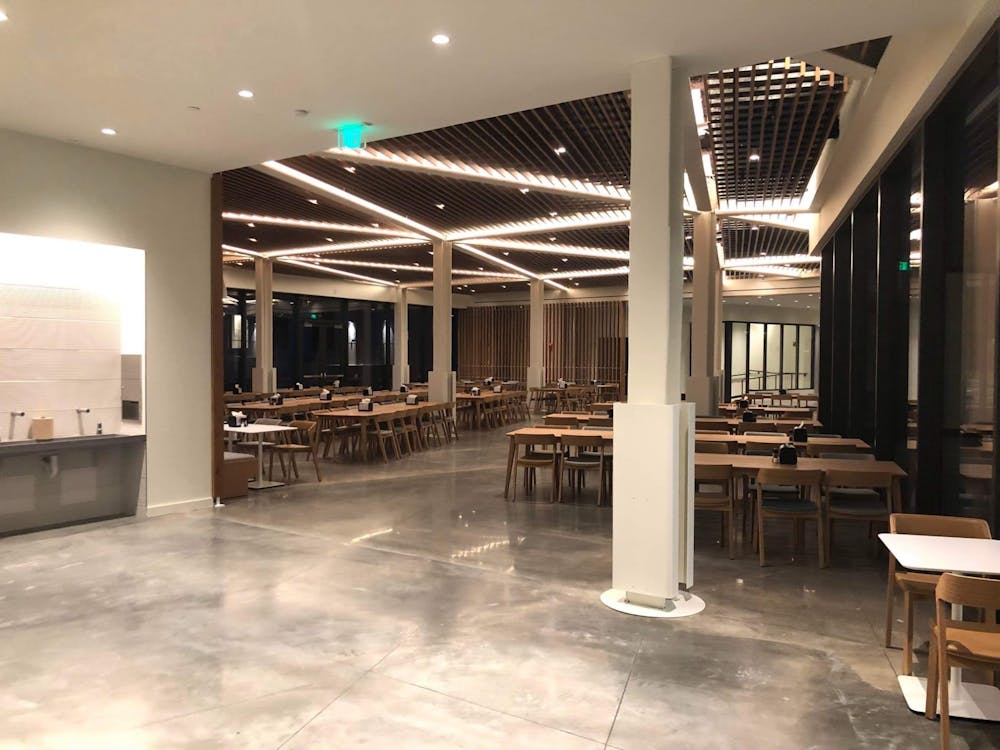From chicken pot pie to pork hunan and tofu stir fry to peri peri chicken, Campus Dining boasts that they “provide a wide variety of foods.” Yet most students are unaware how the entrées on the daily menus are chosen or what makes each dining hall distinct.
To unravel this mystery, The Daily Princetonian analyzed the main entrées served for dinner by each dining hall from Aug. 30 to Nov. 11, 2022. Data was sourced from archives of The Daily Princetonian Campus app’s menus section. Each individual dish was then categorized according to various factors, such as the type of meat it uses and what cuisine it fits into.
On some days, Campus Dining did not update their menus online, resulting in gaps in the data extracted from the Campus app. However, these small gaps had a minor impact on the 388 total dishes that the ‘Prince’ was able to record and analyze. During the time period from Aug. 30 to Nov. 11, 2022, the ‘Prince’ was only unable to record 53 entrées, or just 12 percent of the total dinners served during that period.
Based on our analysis, we found that while there are some consistent trends — chicken is the most common meat in every dining hall, for example — each dining hall has a unique personality based on which meats and cuisines they serve.
The real meat of the data was, well, meat. Dishes with chicken were the most common dinners by far, accounting for 48 percent of all entrées across all dining halls. Chicken was also the most-served meat in each individual dining hall, with dishes including Whitman’s chicken fajitas, Forbes’ chicken tikka masala, and Rockefeller/Mathey’s (RoMa) ginger glazed chicken.

Overall, beef was the second most served meat across all the dining halls. However, it misses the silver medal in some individual dining halls. RoMa, for instance, serves pork second-most often behind chicken, while the Center for Jewish Life served fish over twice as often as they served beef.
The Center for Jewish Life is a kosher dining hall supervised by the Orthodox Union, and therefore does not serve pork or shellfish.

The types of meat also varied by dining hall. Wilcox offered the most diverse selection of meats, serving each kind at least once — with the exception of the Forbes-exclusive curried goat. Yeh and New College West, which opened at the start of this academic year, had a similar variety of meats, though they did not serve any entrées with lamb in the timeframe of our analysis.
While the dining halls serve an assortment of dishes, dining administrators say that the menu selection process each day is far from arbitrary.
“We do have a chef council that meets every two weeks; there’s about 10 to 15 chefs in that group,” Assistant Vice President of Campus Dining Nadeem Siddiqui told the ‘Prince.’ “They decide on a lot of those decisions about what to purchase, how much, what to do with the menus and recipes, and they interchange ideas.”
Along with the feedback from these meetings, Campus Dining also utilizes a more technical food management system to manage inventory, reduce food waste, and track the popularity of different dishes.
“We use that for forecasting how much to produce and how much food to make each meal. As we have more data, it helps us chefs decide what to purchase, what things students like, and what things students don’t like,” said Siddiqui.
The result of these developments is a new focus on cuisine from a diverse range of cultural origins.
“I think it’s important that we expand the palate of our students by offering a different variety of ethnic food and choices,” Siddiqui said. “Food is such a personal thing that if you offer good food, people think, ‘Oh, you know me.’”
The ‘Prince’ tagged each entrée served with an appropriate cuisine, based on independent research on dishes’ region of origin. For dishes where a cuisine is in the name (i.e. Japanese Curry Beef), we categorized the dish based on the name provided. 137 dishes that were not associated with a specific kind of cuisine or whose origins were disputed (i.e., herb roasted chicken, roast loin of pork, roasted turkey) were not categorized, resulting in a sample size of 251 entrées across 27 different cuisines.
Italian and Indian food were tied for most commonly served across dining halls. Meals from these regions each accounted for 13.94 percent of dinners and were the most-served cuisines in dining halls at large. By excluding these two categories from the data, unique flavor profiles for individual dining halls start to show.
In New College West and Yeh, American, Cuban, and Tex-Mex options are most common. RoMa, on the other hand, tends to most frequently serve Asian entrées, with Thai, Korean, and Chinese as the most common cuisines.
“It’s not the same menu for every dining hall,” Siddiqui said. “Each dining hall has its own personality, its own culture, and I think respecting that is very important to us.”
Siddiqui told the ‘Prince’ that by feeding Princeton students, the Campus Dining staff feels like it is investing in the students and the future.
“The goal is to provide healthy, high-quality food. Sustainable, local: as much as we can get.”
Yacoub Kahkajian is a contributing writer for the Data section of the ‘Prince.’ Please direct any corrections requests to corrections[at]dailyprincetonian.com.








